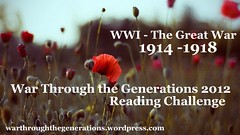The Picture of Dorian Gray by Oscar Wilde is a Gothic novel with strong themes of corruption, innocence, and the “grand” Faustian bargain. The novel begins with Basil Hallward who speaks of a mysterious and beautiful young man, Dorian Gray, to his friend Lord Henry Wotton who has some very hedonistic world views. With elements of Stevenson’s Jekyll and Hyde and Shakespeare’s Hamlet and Romeo and Juliet, Wilde has created a critique of the Victorian era by exaggerating elements of the Romantic age, particularly the horror, awe, and aesthetic experience, which is embodied in Lord Henry and eventually Dorian Gray — in the most absurd way.
Dorian is an insanely narcissistic man who meets Basil and Lord Henry, two men obsessed with beauty and pleasure and its fleeting nature. Basil is more obsessed with Dorian’s stunning beauty as a fuel for his art, while Lord Henry pontificates his various theories about pleasure and beauty and its transient nature in an effort to garner Dorian’s favor and fuel his own ego that loves the art of influencing others. Dorian is ripe for Henry’s picking as he seems to be — at least initially — like a child seeking stimulation and knowledge, but like a child, he does not have the tools to question what he is told and what he experiences.
“There was something terribly enthralling in the exercise of influence. No other activity was like it. To project one’s soul into some gracious form, and let it tarry there for a moment; to hear one’s own intellectual views echoed back to one with all the added music of passion and youth; to convey one’s temperament into another as though it were a subtle fluid or strange perfume: there was a real joy in that — perhaps the most satisfying joy left to us in an age so limited and vulgar as our own, an age grossly carnal in its pleasures, and grossly common in its aims . . . ” (page 26)
Wilde’s prose is full of contradictions and theories about the age in which these characters live, and many of these theories (contradictory and otherwise) are espoused by Lord Henry, who remains a catalyst for Dorian’s thinking, which ultimately leads to his tragic downfall. What’s interesting is that the Faustian bargain is not an outright bargain made by Dorian, but simply an expressed wish that comes true. This technique is typical of Gothic literature in that some supernatural elements occur and are not explained. However, Dorian is not blameless in the events that befall him because he is given several opportunities to amend his ways and to experience life more deeply than his superficial pleasure seeking. For instance, he meets a young woman, Sibyl Vane, who mirrors his older self in that she is innocent of influence and able to see the good and beauty in all of life before her, in spite of its obvious crassness and dingy elements. But rather than seizing the moment to become something more, Dorian again falls into Lord Henry’s mold, only able to see the superficial and abandons Sibyl, who like Ophelia and Juliet has little choice but to exit from his world.
“There is something of a child about her. Her eyes opened wide in exquisite wonder when I told her what I thought of her performance, and she seemed quite unconscious of her power.” (page 39)
The Picture of Dorian Gray by Oscar Wilde is like a flippant response to an age where pleasure was the main concern, but its dark, Gothic undertones provide a horrifying examination of how pleasure-seeking and narcissism can lead to a corruption of the soul. Dorian is a young man led willingly astray by his peers and willingly ignores reason and his conscience to improve his treatment of others and himself. When the portrait takes on his sins, he becomes free of accountability and engages the world in more than one way that dirties his soul and that of those around him.
***This was the first selection for my new book club***
Only one member did not finish the book, and he said that the language and dialogue between the male characters was unrealistic to him and he had a hard time connecting with the characters and their story. Other members seemed to like the book well enough, but no one was overly impressed with it, though it did generate a great deal of discussion as to whether Lord Henry was the devil or merely an influencer and why Dorian was so eager to follow the path laid out for him by Lord Henry. There was a great deal of discussion as to what caused the painting to reflect Dorian’s sins and how that came about and whether the fact that the painting absorbed all his evilness allowed him to not be accountable for his actions and fueled his downfall.
There were some in the club who wanted to know more about certain events in the book (i.e. a poignant blackmail letter), and most of us agreed that the pages of description of Dorian’s collection of fabrics, jewelry, and musical instruments was dry and excessive, it did point to Dorian’s excessive existence.
While it was no one’s favorite book, it certainly generated a great deal of discussion. I may have liked the book a little more than others and kept pimping the movie version with Ben Barnes.
We’re looking forward to March’s pick: Star Wars & Philosophy by Kevin Decker and Jason Eberl




 I’m sure you’ve heard of Unputdownables‘
I’m sure you’ve heard of Unputdownables‘ 

 This is my 10th book for the Everything Austen II Challenge.
This is my 10th book for the Everything Austen II Challenge.





